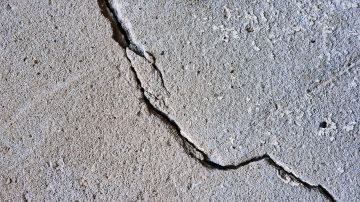Parts of Puerto Rico Still Without Power or Water After Quake
Puerto Rico remains in a state of emergency in the aftermath of a 6

Photo: Unsplash/@photoart2018
Puerto Rico remains in a state of emergency in the aftermath of a 6.4 magnitude quake and 6.0 aftershock on Tuesday with two-thirds of the island without power and a quarter without running water. According to BBC, it’s the strongest earthquake to hit the island in more than a century and the strongest in a series of hundreds of quakes that have struck since Dec. 28.
It was centered off Puerto Rico’s southern coast, six miles south of Indios, a barrio with a population at around 3,000 in Guayanilla. At least one person died and 300 homes have been destroyed. The main generating facility for all of Puerto Rico — the Costa Sur plant, was severely damaged, according to Gov. Wanda Vázquez Garced.
“We lost the largest plant in the entire system,” Jose Ortiz, executive director of the Electric Power Authority, told CNN. The devastation has led residents to sleep in their cars outside the home for fear of another powerful aftershock, the publication reports.
“So much worse than Maria, because a hurricane, we can tell where the hurricane is coming through, but we don’t with an earthquake,” Guánica Mayor Santos Seda told CNN. “Yesterday, my wife and I slept on the sidewalk right outside my house, and we saw the same thing everywhere.”
The town in southern Puerto Rico has been hit with at least 10 aftershocks before 8 a.m. on Wednesday, according to CNN. That same day the Trump administration approved Puerto Rico’s request for a federal disaster declaration, providing funding for repairs and debris removal and financial assistance for residents who lost their homes. The island is home to a little more than 3 million people who are slowly recovering from Hurricane Maria, a Category 5 storm that wreaked havoc in September 2017. The death toll was around 3000 with about $100 billion in damages that left many areas inhospitable to this day.
However, the threat of another quake has left residents wary as there’s no warning and therefore no way to be certain of when they’re safe. Education secretary Eligio Hernández reportedly said that 95 percent of the island’s public schools were not built up to current earthquake building codes, the New York Times reports. This is problematic as the island is located between the North America and Caribbean tectonic plates, making it vulnerable to quakes.
The publication goes on to report that there is now law that requires the nearly 900 schools on the island to stay up to date with new code revisions for earthquake safety. About 70 percent of the island’s infrastructure, including more than 500 schools, was built before 1980 and the code that required quake resilience was enacted in 1987, according to the NY Times.
The total cost of the damages could reach $3.1 billion, according to Chuck Watson, a disaster modeler with Enki Research in Savannah, Georgia, reports Bloomberg. Anyone able to provide monetary donations can do so through the recovery fund run by the local nonprofit Correa Family Foundation, they’re currently asking for $20k.

















